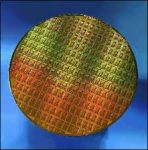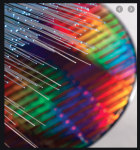You are currently viewing SemiWiki as a guest which gives you limited access to the site. To view blog comments and experience other SemiWiki features you must be a registered member. Registration is fast, simple, and absolutely free so please,
join our community today!
Summary
A recent process enhancement in advanced nodes is to support the fabrication of contacts directly on the active gate area of a device. At the recent VLSI 2020 Symposium, the critical advantages of this capability were highlighted, specifically in the context of the behavior of RF CMOS devices needed for 5G designs.
Introduction… Read More
Having spent the last 30 years in semiconductor manufacturing, eight years of this living and working in Asia, it is both exciting and unsettling to see renewed political interest in the revitalization of this industry in the United States. Gone are the days of ‘It doesn’t make any difference whether a country makes computer chips… Read More
Summary
A novel spin-transfer torque magnetoresistive memory (STT-MRAM) IP offering provides an attractive alternative for demanding high-performance embedded applications.
Introduction
There is a strong need for embedded non-volatile memory IP across a wide range of applications, as depicted in the figure below.
The… Read More
In this third article about China’s role in the global semiconductor industry I analyse the current state of affairs of the Chinese semiconductor industry in different segments. In the previous articles, I looked at the possible effects of a US-China decoupling in the semiconductor industry and the impact of the Big … Read More
eFPGA is now widely available, has been used in dozens of chips, is being designed into dozens more and it has an increasing list of benefits for a range of applications. Embedded FPGA, or eFPGA, enables your SoC to have flexibility in critical areas where algorithm, protocol or market needs are changing. FPGAs can also accelerate… Read More
COVID-19 underscores the importance of US-based production for strategic industries
The COVID-19 pandemic has drawn intense focus on the need to repatriate pharmaceutical manufacturing back to the United States. The increased awareness that a strategic adversary manufactures or controls up to 80% of the active pharmaceutical… Read More
Embedded non-volatile memory (eNVM) plays an essential role in most systems and SoCs. eFLASH has found its way into a wide range of devices, including automotive, industrial, IoT and those in a mixture of other markets. NAND Flash has proven to be a workhorse in all of these areas. For instance, MCUs use them for code and data storage… Read More
The use of machine learning (ML) to solve complex problems that could not previously be addressed by traditional computing is expanding at an accelerating rate. Even with advances in neural network design, ML’s efficiency and accuracy are highly dependent on the training process. The methods used for training evolved from CPU… Read More
In the past, I’ve focused my annual predictions on electronics – ICs and EDA – but recently I’ve turned my focus to photonics, so my 2020 predictions are primarily in this area.
Historically, photonics has been the Gallium Arsenide of technologies; it was, is and always will be the technology of the future. Analysts have forever … Read More
IEDM 2019 had the theme: “Innovative Devices for an Era of Connected Intelligence” of which MRAM is a leading contributor. Following a very informative Plenary Session, Monday afternoon led off with Session 2: Memory Technology – STT-MRAM. This session has seven important STT-MRAM papers describing the progress of this … Read More









